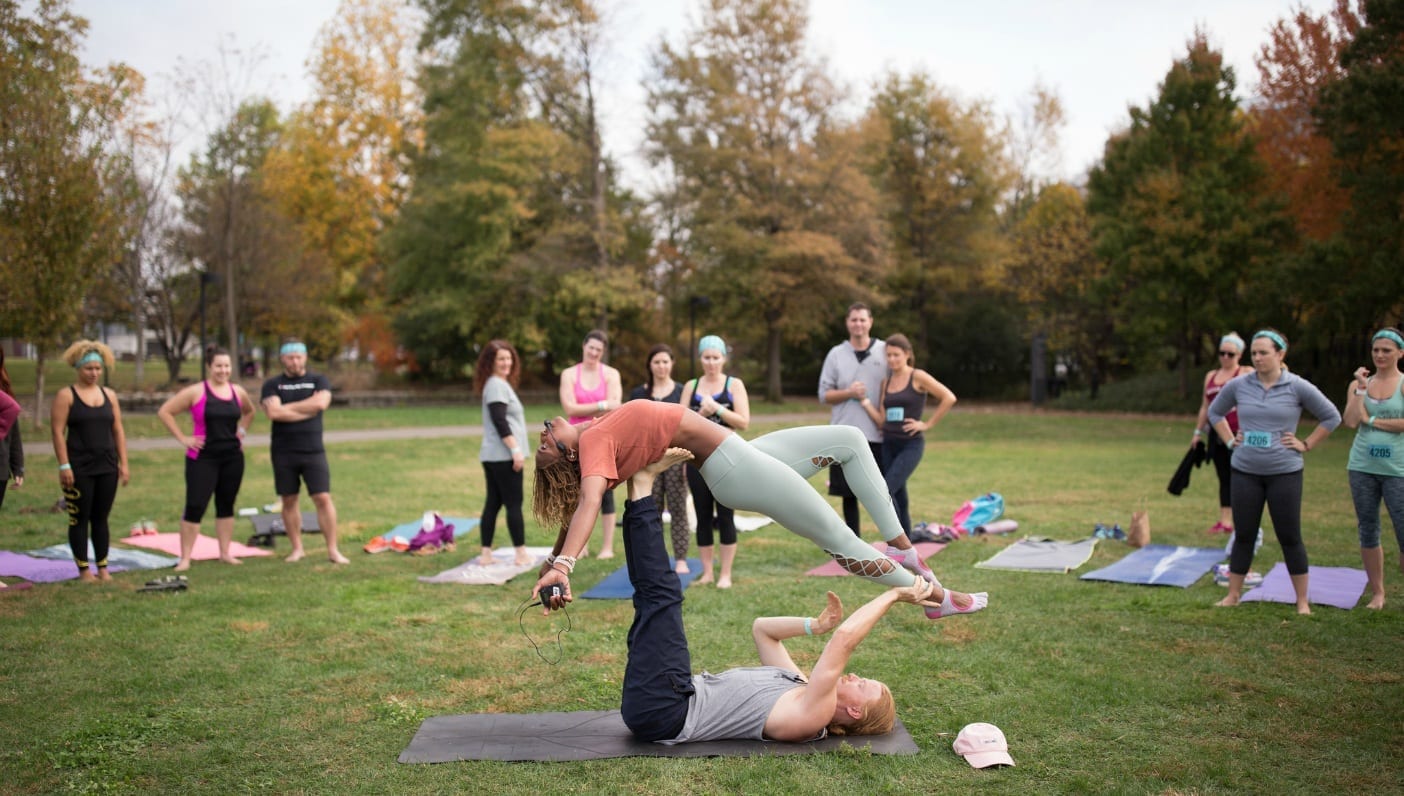
Let’s face it—we’re inundated with information about holistic health. At the rise of a consciousness revolution, people are taking health into their own hands in a manner that requires minimal intervention. But in this Information Age, how can you determine what modalities work, what’s right for you, and what is a complete myth?
From veganism to meditation, we set out to bust the top holistic health myths and employed the help of internationally-recognized wellness coach, Wanderlust teacher, and top celebrity personal trainer, Koya Webb, to help us along the way:
Myth #1: “If I go vegan, I won’t get enough protein in my diet.”
With plant-based restaurants popping up left and right, there has been a huge shift over the past decade with more and more individuals choosing a vegan diet. Yet, we still hear the familiar phrase, “If I go vegan, I won’t get enough protein in my diet.” It’s not uncommon to believe this as the truth. In fact, Koya believed this myth for a long time before she decided to transition from vegetarian to vegan twelve years ago.
Koya recommends filling your diet with greens such as spirulina and chlorella, superfoods such as seaweed or quinoa, and plant-based protein supplements in smoothies. These protein alternatives are packed with the sustenance your body needs to thrive.
Myth #2: “If I lift weights, I’m going to get bulky.”
As a trainer and coach, Koya is no stranger to the myth that lifting weights makes you bulky. Many women avoid using weights in their workout altogether because of this hoax. However, weight training is an excellent tool for building muscle endurance and strengthening the joints, ligaments, and tendons that often get overexerted in other forms of exercise such as cardio or calisthenics.
“When you see someone with bulky muscles, they didn’t use weight lifting alone to get to that point. It starts first with diet then heavy lifting,” Koya explains.
Myth #3: “Our thoughts don’t directly affect our health.”
Do you ever notice the thoughts running through your brain on a given day? What do they sound like? Are they positive and uplifting or are they judgemental and doubting? Mindset training is at the core of everything Koya teaches, and rightfully so, “People don’t realize how powerful your thoughts are when it comes to healing both emotionally and physically.”
Through neuroplasticity of the brain, research has shown that practicing positive psychology creates and strengthens new neural connections such as positive habits and positive self-talk, while removing limiting beliefs that are no longer necessary.
“Always use ‘I’ when you’re speaking to yourself. Find or create a mantra or affirmation. Tape it on the mirror, write it in lipstick or speak directly to yourself and practice this daily,” Koya suggests.
Myth #4: “I can’t ____.”
Over the next 24 hours, take inventory of all the times you hear a sentence start with “I can’t…” Whether it’s “I can’t meditate!” or “I can’t do a handstand!” most people defeat themselves before they get started and this phrase can make or break you.
Koya sees this destructive belief come up constantly and trains her clients to remove it from their vocabulary altogether. Instead, replace “I can’t” with “I’m going to try” and see how the expansive energy of yes opens you to endless possibilities.
Myth #5: “I don’t know how to meditate.”
Quieting the mind and finding stillness in our yang-centric culture is intimidating, but meditation does not require you to completely clear the mind. Rather, meditation is the practice of recognizing thoughts as they happen, detaching yourself from the thoughts, and coming back to the present. We’re not meant to be completely thoughtless, so use meditation as a tool to increase equanimity in your inner and outer world.
“The more you practice, the more you are,” Koya says. “As long as you can breath, you can meditate. If you struggle with focusing on the breath, use a mantra while you meditate to bring you back to the present.”
How To Navigate Holistic Healing Modalities
The influx of information in the wellness realm can be overwhelming, often leaving us wondering what step to take next. “Gather as much information as you can from different sources. You don’t need to do everything that one wellness leader says, instead, seek out information, pay attention, and find what serves you at this phase in your life best,” Koya recommends.
Koya Webb has spent upwards of a decade devoting herself to the study of holistic health and is constantly asked how she is able to disseminate and choose the “right” modalities. Whether it’s nutrition, fitness, or spirituality, there is no “right” answer. Look to yourself for what resonates with you most, what nourishes your soul, and what leads you closer to your true north.
—
 Ava Pendl is a freelance writer, yoga teacher, and wellness marketing strategist based out of Southern California with devotion to the art of self-health, yoga, and holistic rituals. As a yogi with many different hats, she spends her time writing for her blog, teaching wellness professionals the art of branding, and connecting the world with her favorite conscious brands. With a passion to inspire, Ava is on a mission to spread a message of wellness, creativity, and community—one asana at a time.
Ava Pendl is a freelance writer, yoga teacher, and wellness marketing strategist based out of Southern California with devotion to the art of self-health, yoga, and holistic rituals. As a yogi with many different hats, she spends her time writing for her blog, teaching wellness professionals the art of branding, and connecting the world with her favorite conscious brands. With a passion to inspire, Ava is on a mission to spread a message of wellness, creativity, and community—one asana at a time.